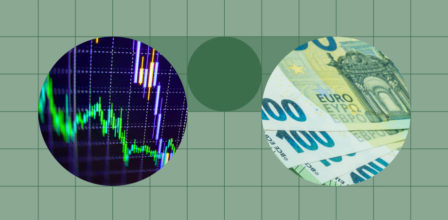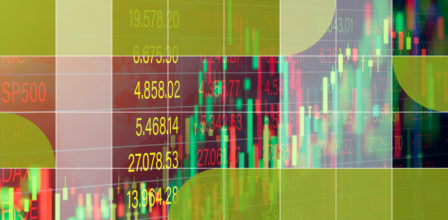Credit Factor Effects 2022: How did systematic factors perform in the challenging environment?
2022 was a difficult year for active credit managers with high inflation rates, rising spreads and rates, as well as negative risk premia returns. Dr Harald Henke explains how systematic credit factors help up in EUR and global investment grade markets.


Dr. Harald Henke
Head of Fixed Income Strategy
Introduction
The year 2022 was recorded in history as the year with the worst total returns in investment grade credit ever measured. While ten-year rates in the US and Germany rose by between 2.5 and 3 percentage points, credit spreads widened likewise with a moderate 40 basis points increase in the US and a larger 72 basis points widening in Europe.
As we have shown last year, fundamental credit managers tend to underperform in periods of rising spreads, although large rate moves have the potential to compensate performance if they adopt meaningful duration positions on the right side. Indeed, the majority of funds recorded negative relative performance last year, in particular for global credit. But how did systematic credit factors work in this challenging environment?
Factor investing and methodology
Systematic factors are signals that are associated with risk premia. A value factor, for example, invests in undervalued bonds expecting that the market corrects their mispricing over time. Likewise, factors like momentum (bonds of companies that have an above-average trend in their equities), quality (bonds with strong balance sheets) and carry (bonds with high spreads/steep credit curves) are used in many factor strategies.
When these factors or factor combinations are incorporated into the construction of credit portfolios, we speak of credit factor investing or systematic credit investing. Most systematic strategies use a combination of the individual factor signals, with different factors and factor weights across approaches, to create a so-called multi-factor signal as the main return forecast in the portfolio construction process. In the analysis below, we use academic factor portfolios without consideration of real-world restrictions like transaction costs, illiquidity or limits on sector or country exposures. With the exception of the carry factor, where values may vary strongly between bonds of different maturities of the same company, we use one synthetic five-year bond per issuer to avoid large differences in interest rate or spread duration between factors. The portfolios, however, will have differences in their credit risk as measured by DTS. This, however, is part of the factor characteristics, as carry, for example, is inherently riskier than momentum or quality.
Every month, at the close of the last trading day, the portfolio invests equally weighted in the top 20% of the respective signal at benchmark spreads and then keeps the portfolio holdings constant for one month. The factor performances should therefore not be understood as indicators of performance potential as real-world frictions and costs inevitably lead to return slippage. Still, comparison across years and strategies helps draw conclusions on factor performance in 2022. The multi-factor signal is as defined by Quoniam.
How did factors perform in 2022?
The graphs below show the monthly factor performances of the above-mentioned factors. Panel A shows results for Euro investment grade (IG) credit, panel B for global IG credit.
Figure 1: Factor Performance 2022
The numbers for Euro IG give some interesting insights into the events of 2022:
- Value was the best-performing factor with an annual outperformance of 2.6%. Only in June did the factor show a negative development, while March was a particularly strong month.
- On the other side of the spectrum, the carry factor recorded the weakest return at -3.3%, with strong underperformance in the first half of the year (particularly in February, March and June) and some recovery in the second half of the year.
- Momentum ended 2022 with a flat return thanks to a strong March performance whereas quality underperformed at -0.6%, with underperformance in the first half of the year (with February and March standing out) and flat performance in the second half.
For global IG credit, the numbers differ from the Euro universe as can be seen in Panel B of Figure 1:
- Surprisingly, quality turned out to perform poorly with an annual return of -3.6%. Usually, this factor is not associated with high returns in any direction, but the months of February and March in particular proved to be different in 2022.
- As with Euro IG, carry was the worst performing factor with a similar monthly pattern. However, the overall magnitude of losses in this factor was higher in global IG at -4.8%.
- Momentum was better than in Euro IG at 0.9% and value somewhat worse at 1.9%, but their monthly patterns look similar to the Euro universe.
Combining factors into a multi-factor signal does not mean that the multi-factor return is the weighted average of the individual factor returns. Individual factor returns display the performance of extreme portfolios with high exposure to the one factor under consideration. The multi-factor signal on the other hand shows the performance of a portfolio with a relatively balanced exposure to all factors (and hence the high multi-factor signal). Therefore, the portfolios are distinctly different.
The multi-factor performance in 2022 is as follows:
- In Euro IG, the multi-factor signal yielded 1.4% being mostly flat with one strong month in March.
- In global IG, the annual performance was lower at 0.9% showing the same return pattern as in Euro IG.
The factor results show strong effects in March 2022. One reason for that is the treatment of hard-currency corporate bonds by Russian companies in the benchmark. After already dropping in February, these bonds had poor value, poor momentum but very high carry at the time of the construction of the portfolio at the end of February. Moreover, by that date they were still rated investment grade and constituents of the relevant benchmarks. At the end of March, all benchmark providers took them out of their benchmarks at a price of zero indicating a -100% return in March. Therefore, the carry performance was negatively impacted by this effect while the performances of all other factors were boosted.
Although one could argue that the factor performance should incorporate this effect, we look at the 2022 numbers again excluding March. Note, however, that the March performance includes more than the pure Russia effect.
The remaining 11 months of 2022 have the following performance numbers:
- Euro IG: carry -1%, momentum -0.8%, quality -0%, value 1.7%, multi-factor 0.5%
- Global IG: carry -1.3%, momentum -0.3%, quality -0.8%, value 0.6%, multi-factor -0.5%
Carry and quality scores are better outside of March but still negative, while all other factors are worse as expected. Many of the factors did not yield positive returns without the March effect.
Historical context, correlation and macro effects
While credit factors did exhibit slightly positive returns in 2022, it is interesting to compare last year’s results with a longer-term average. This is done in Table 1, where we show performance for the five-year period 2017-2021 as well as for last year.
Table 1: Factor performance in historical context
| Euro IG | Carry | Momentum | Value | Quality | Multi-factor |
|---|---|---|---|---|---|
| 2017-2021 | 0.79% | 0.61% | 0.92% | 0.27% | 1.02% |
| 2022 | -3.34% | -0.01% | 2.56% | -0.64% | 1.43% |
| Global IG | Carry | Momentum | Value | Quality | Multi-factor |
|---|---|---|---|---|---|
| 2017-2021 | 1.41% | 0.68% | 0.64% | 0.27% | 1.18% |
| 2022 | -4.84% | 0.92% | 1.91% | -3.62% | 0.86% |
Table 1 shows that for Euro IG not only carry but also momentum and quality have performed below their respective five-year averages, while only value has shown a strong performance in 2022. The multi-factor signal is above average for 2022 if we include the March effect, but only at half-of the five-year number without March.
In Global IG, carry and quality are even further behind their respective averages while particularly value had a good year in 2022. However, the multi-factor signal, which identifies bond with positive exposures to a majority of factors, is roughly 25% below its five-year average, including the March effect.
This suggests that 2022 was a challenging year for multi-factor credit performance, particularly for Global IG, with results below what we have seen in previous years.
The correlation between returns in these two universes is high for all factors for 2022, ranging from 79% for value to 95% for carry.
The correlation between the individual factors as well as with the multi-factor signal, however, is heavily influenced by the treatment of Russian bonds in the benchmark leading to a strong negative correlation between carry and quality, respectively, with all other factors and an upward bias in the correlation between all remaining factors. If we exclude the March numbers, some numbers stand out:
- Carry and value are positively correlated at a relatively high 53% for Euro, but negatively correlated at -43% in Global IG.Carry and value are positively correlated at a relatively high 53% for Euro IG, but negatively correlated at -43% in Global IG.
- The correlation between value and momentum returns was low. In Euro IG it was even negative at -16%.
- Quality is negatively correlated with all other factors in Euro IG and positively in Global IG. The reason is probably the difference in market risk as equities of defensive European companies underperformed in 2022 too, due to the risk to European energy security.
Finally, as the year 2022 was characterised by strong rate increases interrupted by sharp counterrallies in rates, we analyse the correlation between monthly factor returns and interest rate moves. The correlation is generally low, ranging from -7% to +28% for Euro IG and between -27% and +23% for global. We conclude that the macro environment did not significantly impact factor performance in 2022.


